Chinese Name: 北海公园 Pronunciation: běi hǎi gōng yuán
Building Time: 1179
Popular Activities: Boating
Recommended Time for Visit: 2-4 Hours
Address: No.1, Wenjin Street, Xicheng District, Beijing
Occupied Area: 69 hectares (690,000 square meters)
Best Visiting Season: Spring and Autumn (March to May, September to November)
Building Function: The Park is open to the public for recreational activities.
| Ticket Type | Peak Season (April 1st to October 31st) |
Low Season (November 1st to March 31st) |
| Admission Ticket | 10 yuan | 5 yuan |
| Through Ticket | 20 yuan | 15 yuan |
| Attractions | Peak Season (April 1st to October 31st) |
Low Season (November 1st to March 31st) |
| Park Gate | 6:30-21:00 | 6:30-20:00 |
| Gardens and Courtyards in the Park | 9:00-18:00 | 9:00-17:00 |
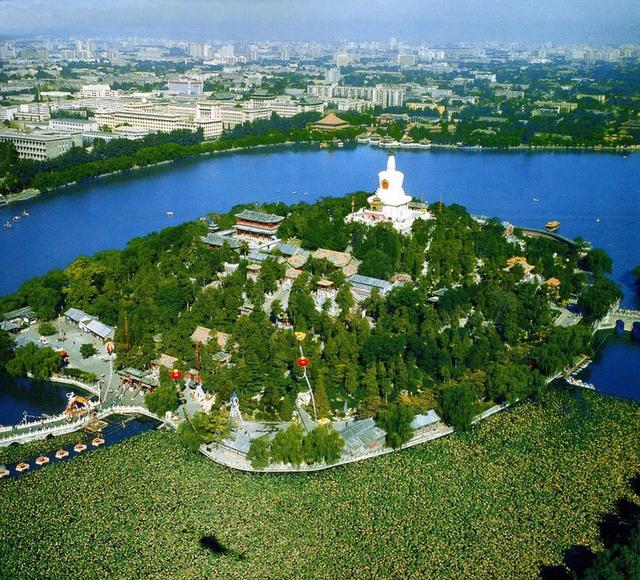
Beihai Park, located in the center of Beijing, is well-known as one of the most beautiful parks in Beijing. It abuts the Forbidden City and Jing Mountain to the east, adjoins two lakes (Zhonghai and Nanhai) to the south, neighbors the Xingsheng Palace to the west, and abuts Shichahai (a famous scenic area) to the north.
The development of Beihai Park went through several dynasties including the Ming Dynasty (1368-1644) and the Qing Dynasty (1644-1912). The Park enjoys about a thousand years of history with a long-standing and profound culture, forming its unique and representative garden style. Beihai Park manifests the remarkable achievement of garden culture and art that have been developed for centuries.
The Park centers around the large Beihai Lake. It consists of several parts including the Jade Islet, the eastern shore, and the northern shore. There are lush trees, green bushes, and secluded pavilions and terraces in the Jade Islet. As the symbol of Beihai Park, the White Dagoba towers aloft the Islet.

Several enchanting gardens like the Painted Boat Hall can be found on the eastern shore. All the gardens are surrounded by green pines and verdant cypresses, reflecting the natural beauty and the charm of imperial gardens. In the northern shore, the Great Western Heaven, the Studio of Calmness, and other ancient architectures are scattered from east to west. They form a delightful contrast with a marvelous natural landscape.
In Beihai Park, people can not only enjoy the beautiful natural landscape but also go boating on the lake. The water of the lake comes from Yuquan Mountain and is very clear and clean. It is also a natural place for water activities in Beijing.
Beihai Park was selected by the State Council as the first batch of major historical and cultural sites protected at the national level in 1961. It once was awarded by the People’s Government of Beijing as “The World’s Earliest Imperial Garden”. It is a national 4A-level tourist attraction that receives an average of more than one million tourists around the world annually.
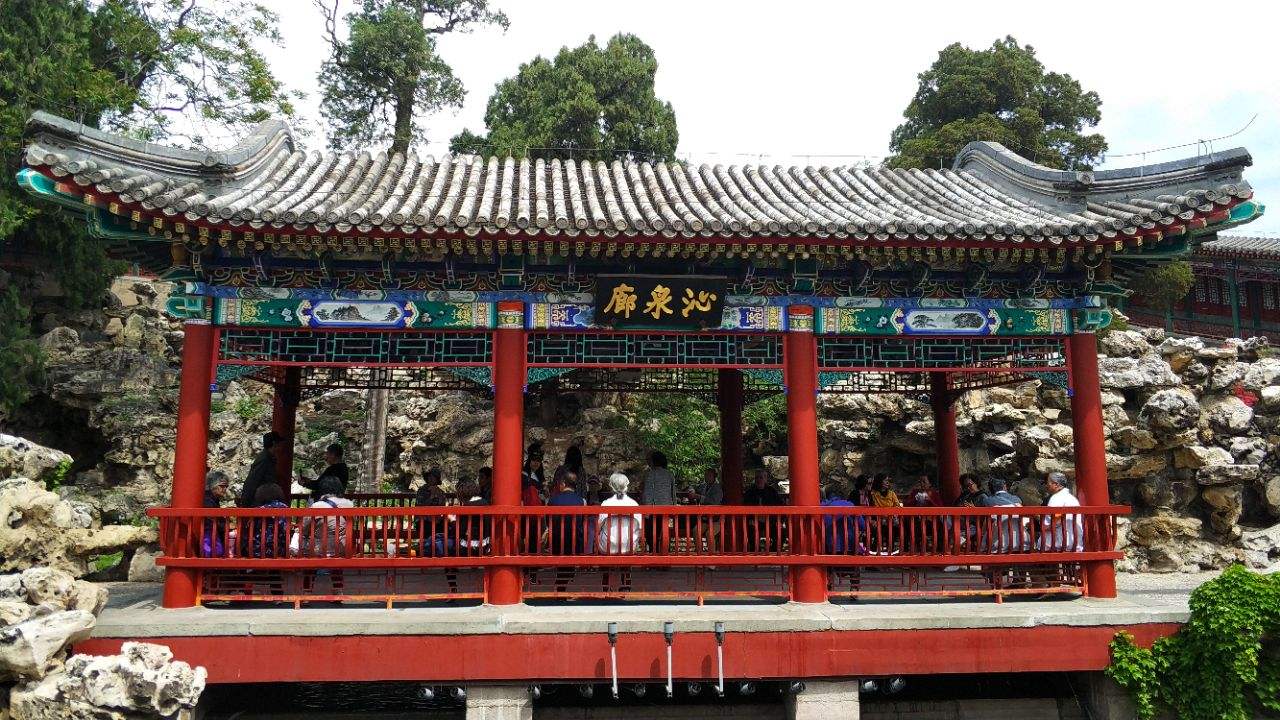
Beihai Park was originally built according to a fairyland depicted in an ancient Chinese myth and has developed into what it is today after several hundred years. In 938, Emperor Taizong of the Liao Dynasty (907-1125) made Yanjing (now Beijing) the capital and ordered laborers to build the Yaoyu Temporary Imperial Palace including the Guanghan Hall near the Bailian Pond (now Beihai).
Emperor Shizong of the Jin Dynasty (1115-1234) built the Jade Islet and constructed the Daning Palace with a large number of Taihu stones. Beihai Park has formed a basic imperial garden style since then. The Jade Islet was expanded three times between 1264 and 1271, and the Guanghan Hall was rebuilt as a place for imperial gatherings at the same time. In 1271, several palaces were built along the shores of the lake so that the whole complex became more magnificent.
During the Ming Dynasty, Beihai Park was expanded and renovated several times. In 1579, however, the Guanghan Hall which stood for over 600 years unfortunately collapsed. The White Dagoba was built in 1651 (during the Qing Dynasty) on the abandoned site of the Guanghan Hall for the sake of national harmony.
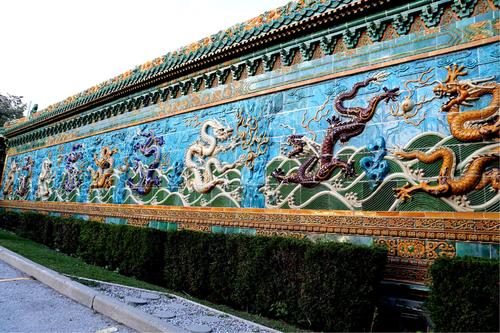
Beihai Park also received a large-scale renovation between 1741 to 1771, and many pavilions, halls, and gardens including the Painted Boat Hall and the Jingxin Garden were built. The large imperial garden managed to absorb the essence of gardens in Jiangnan, the regions to the south of the Yangtze River.
The Park, however, was damaged a lot in the chaos in 1900. It was officially open to the public in 1925 after some repairs. When the People’s Republic of China was founded in 1949, a huge amount of funds was appropriated by the government to repair and renovate ancient buildings and establish public service facilities in the Park. Eventually, Beihai Park acquired a completely new outlook.
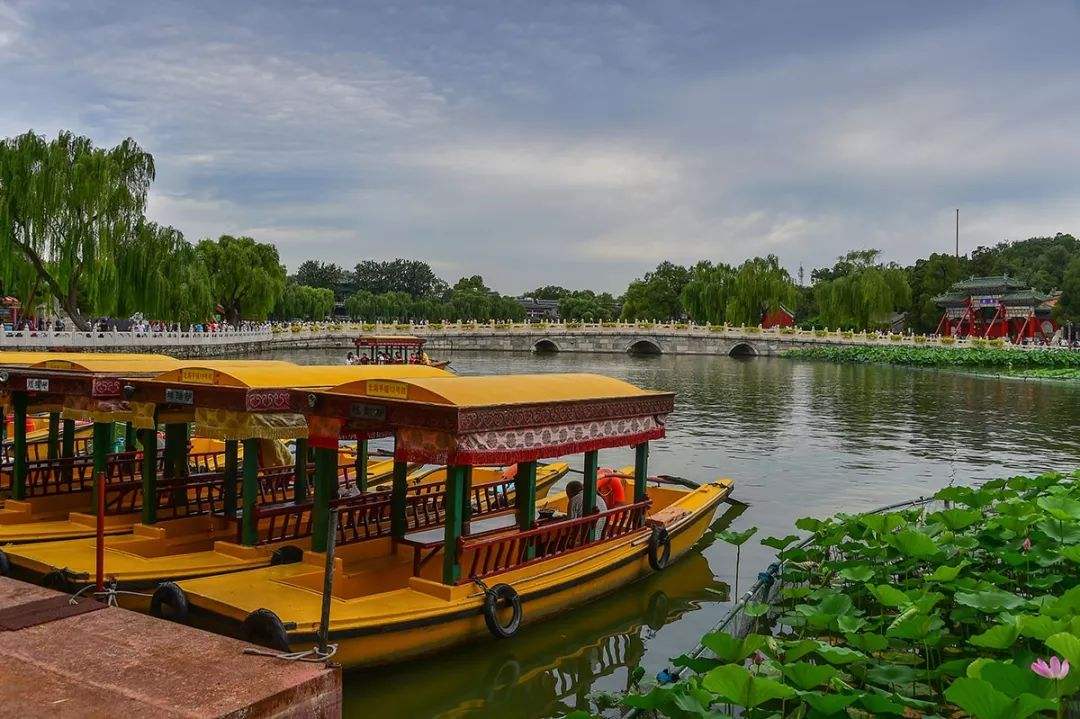
The Painted Boat Hall, located on the eastern shore of Beihai Park, was built in 1757. It is an independent architectural complex surrounded by green trees, consisting of a front hall, a pond, the main hall, and two courtyards. The courtyard in the east of the Hall is called Guketing and that in the west is named Xiaolinglong.
It is said that the Hall was built according to the essay Painted Boat Hall written by Ouyang Xiu, a famous writer in the Northern Song Dynasty (960-1127). Similar to a boat in form, the Hall is structurally exquisite and boasts a pleasant environment. It was frequented by Emperor Qianlong, Emperor Guangxu, and Empress Dowager Ci Xi of the Qing Dynasty for recreational activities.
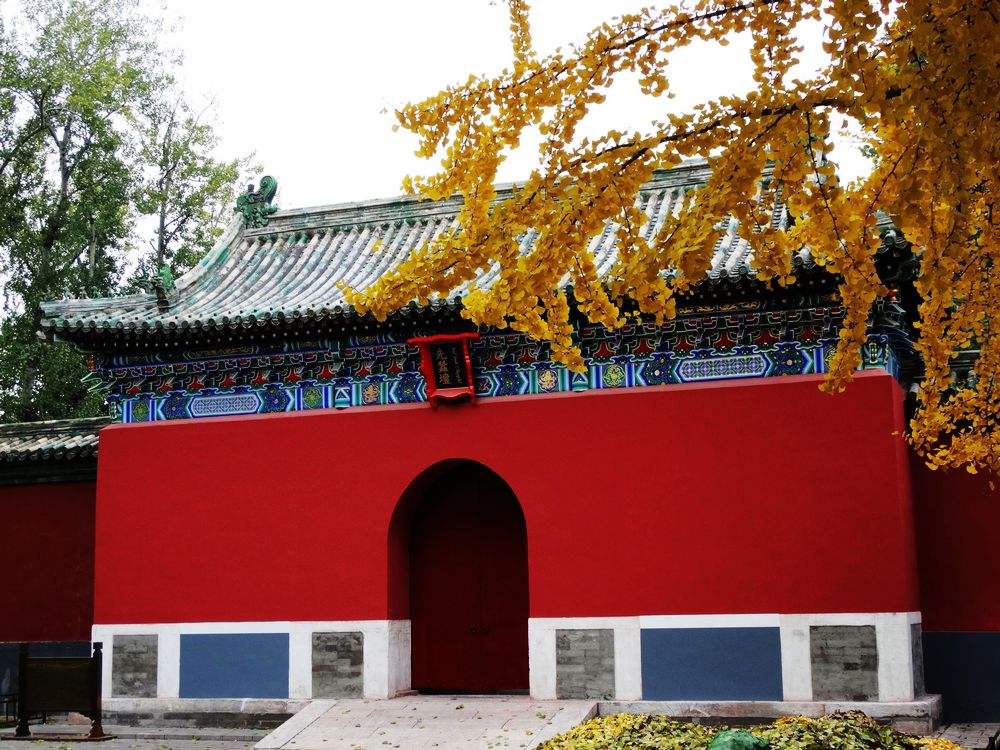
The Altar of the Goddess of Silkworms is located in the northeastern part of the park and covers an area of 17,000 square meters. It was built in 1742 and served as a place for worshiping the Goddess of Silkworms. The Altar is composed of many buildings including the main hall, a rear hall, and a cocoonery. There is a rivulet flowing from south to north in the east of the Altar. The Altar is one of the famous sacrificial architectures in Beijing and an existing imperial place for worship that has been well-preserved.
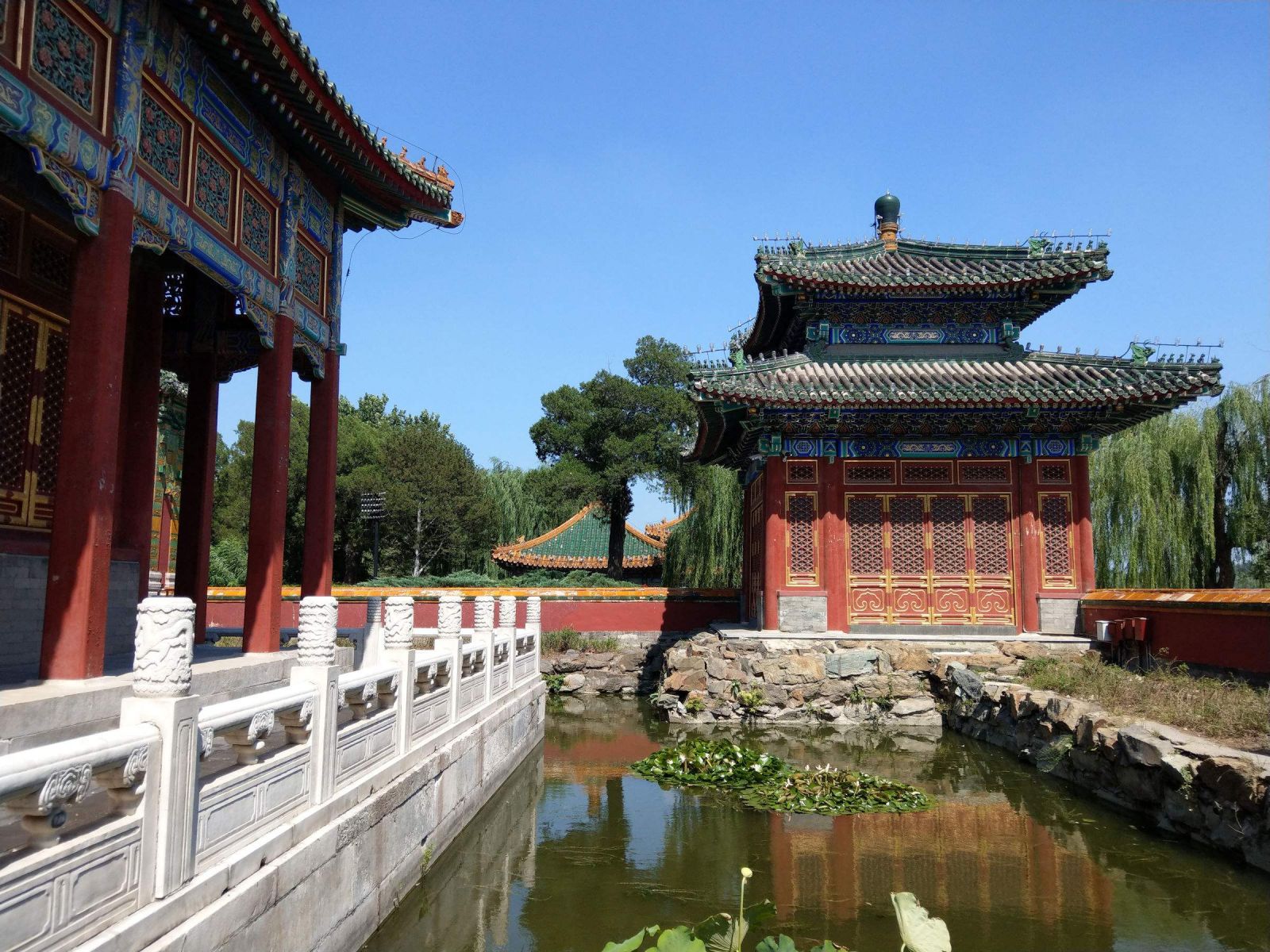
The construction of the Minor Western Heaven started from 1768 to 1770. It was built by Emperor Qianlong of the Qing Dynasty to celebrate his mother’s birthday and pray for blessings. The main building of the Minor Western Heaven is called Land of Extreme Happiness which covers a total area of 1,200 square meters with a 13.5-meter crossbeam. It is honored as the largest palatial architecture of a square style in China.
The windows and doors of the building are elaborately engraved with exquisite patterns. A golden plaque with the handwriting of Emperor Qianlong that reads “Land of Extreme Happiness” is hanging overhead. The building is surrounded by water and accessible by a bridge. There are four glazed memorial archways around the building, and at four corners stand four small square pavilions respectively.
To the south of the building lies a small river in a crescent moon shape, over which there is a bridge with carved railings. A clay sculpture of Putuo Mountain, which symbolizes the Buddhist heaven, used to sit in the building. There were 226 Arhats on the mountain with a sea at the foot of it. Therefore, the mountain was also called “Arhat Mountain”.
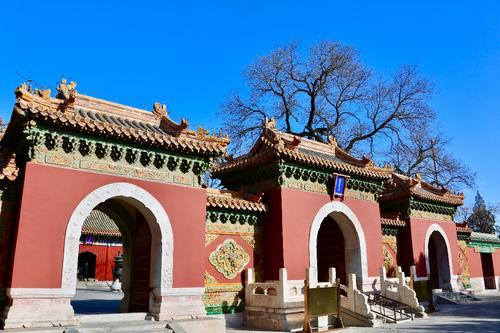
The Great Western Heaven, also called Great Heaven Temple, abuts the Quiet Heart Studio to the east, adjoins the Hall of Full Enlightenment to the west, and sits on the same axis with the Jade Islet. It is one of the most well-known attractions in Beihai Park. The Great Western Heaven was originally a lama temple in the Ming Dynasty and then was rebuilt and expanded in 1759 (during the Qing Dynasty). It was open to the public in 1980 after some repairs.
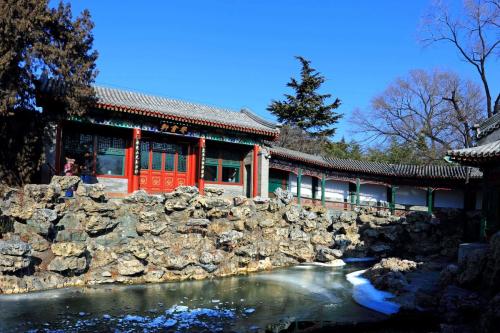
The Quiet Heart Studio, covering an area of 8,700 square meters, is the most exquisite gardens in Beihai Park. It used to be an ordinary official house in the Ming Dynasty and was rebuilt in 1757 (during the reign of Emperor Qianlong) when the Great Western Heaven was expanded. People also called the studio “A Tiny Garden of Qianlong”.
There are Jingqing Study, Bixian Pavilion, Qinquan Corridor, and other elaborate architectures in the Studio. It abuts a hill to the east, adjoins the Western Heaven Temple to the west, and faces the lake to the south. Different pavilions, terraces, stone bridges, ponds, and artistic rockery are scattered there. The whole complex boasts both the imposing style of northern gardens and the elegant charm of gardens in the Jiangnan region.
Jade Islet
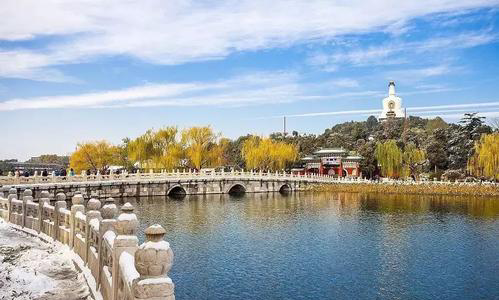
The Jade Islet (or Qionghua Islet) is also named White Dagoba Hill as the White Dagoba was built on the Islet. The Islet is 32 meters high with a circumference of 913 meters. The name of the Islet indicates that it is a fairyland built with beautiful jades. There is also a myth that Qionghua is the flower of the Qiong Tree growing in Penglai, a fabled abode of immortals, and those who eat Qionghua can be ever-young. Therefore, it means that the Islet may be built by imitating the fairyland.
In the early years of the Qing Dynasty, a signal tower was established on the top of the hill and safeguarded by the Eight Banners Army. Originally in the west of the Islet was the Yuexin Hall where emperors of the Qing Dynasty took a rest or held a banquet. The Qingxiao Tower behind the Hall is where Emperor Qianlong and his mother watched ice sports in winter. The Yuegu Tower, the Hall of Gem Light, and other ancient architectures are located in the northwest of the Islet.
The old trees that reach into the sky in the northeast of the Islet are known as the “Jade Islet in Spring Shade”, which was one of the Eight Great Sights of Beijing during the Jin Dynasty. There is a stele with an inscription “Qiong Dao Chun Yin (Jade Islet in Spring Shade)” in the handwriting of Emperor Qianlong.
Temple of Eternal Peace
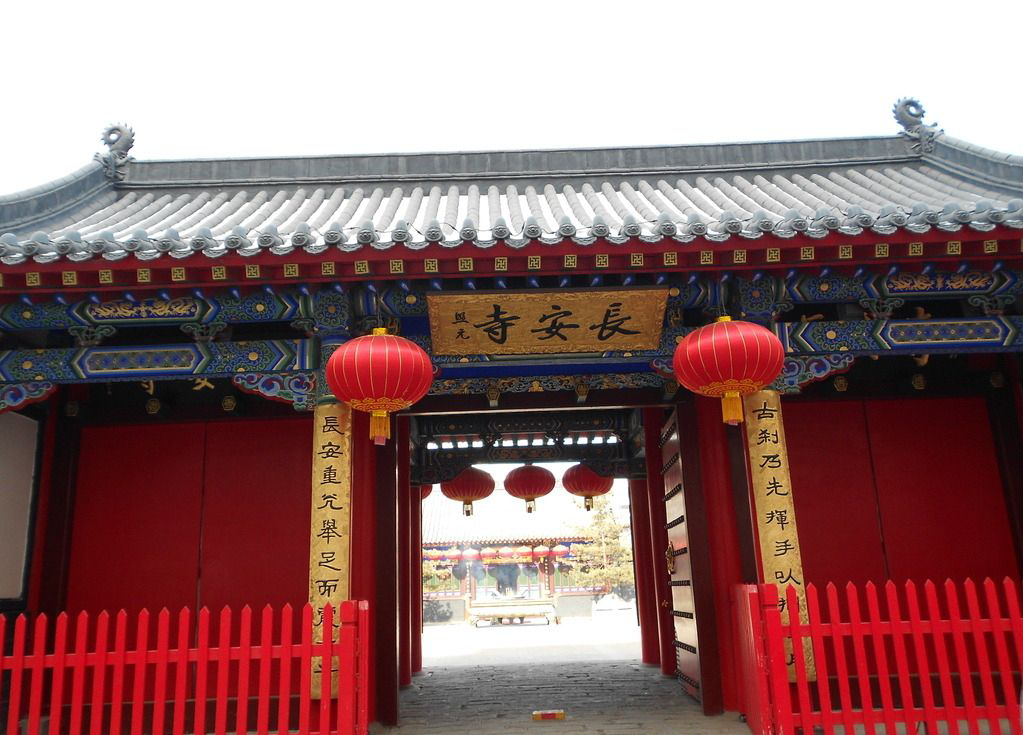
The Temple of Eternal Peace, located in the south of the White Dagoba Hill (or Jade Islet), was built in 1651 during the reign of Emperor Shizu of the Qing Dynasty. It was originally named White Dagoba Temple because of the White Dagoba located in the Temple, but it was renamed Temple of Eternal Peace in 1741.
The Temple at first consisted of the Hall of True Enlightenment, Hall of Universal Peace, Hall of Great Attainment, White Dagoba, and corner rooms. The White Dagoba, a Tibetan-style lama dagoba, is the iconic scenic spot of Beihai Park. The Dagoba is 35.9 meters high, and its upper part is round while the lower part square. The top of the Dagoba is engraved with patterns of sun, moon, and fire.
The Temple was expanded in 1743, and the Hall of the Wheel of Dharma, Bell Tower, Drum Tower, and a temple gate were built. The Hall of Good Cause and two pavilions were added in 1751, and two stone tablets were erected in the two pavilions respectively after 23 years.
The Temple is a complex which reflects the essence of religious culture. Unfortunately, some buildings and statues were destroyed over the years. In 1993, the government repaired the Temple completely, restoring all the damaged buildings and statues. The Temple regained its elegant appearance.
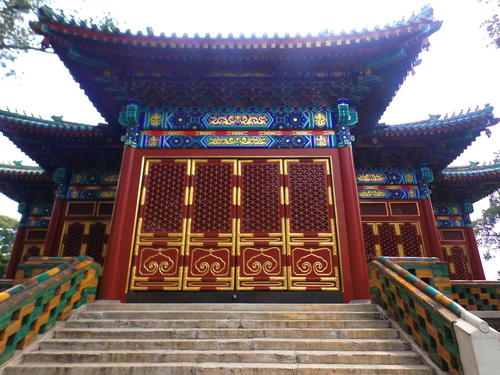
The Round City used to be a small islet in the Taiye Lake and was part of the Daning Palace in the Jin Dynasty. It was also named Yuandi or Yingzhou in the Yuan Dynasty. It was renovated and expanded during the reign of Emperor Qianlong in the Qing Dynasty, and the Yuweng Pavilion was built at that time.
The flat view of the Round City is round, and it is circled by city walls of 4.6 meters high. The Round City covers an area of 4,500 square meters with a circumference of 276 meters. There are two gates embedded in the city walls on the eastern and western sides respectively, a gate tower being built above each gate.
The architectures in the Round City were built in a symmetrical manner combined with garden art. The Hall of Receiving Brilliance is located in the center of the City, the Yuweng Pavilion in the south, and the Jingji Hall in the north, all of which form the central axis of the City. All the other halls and pavilions are symmetrically distributed along the axis. The luxuriant pines and cypresses growing in the City add more splendor to it.
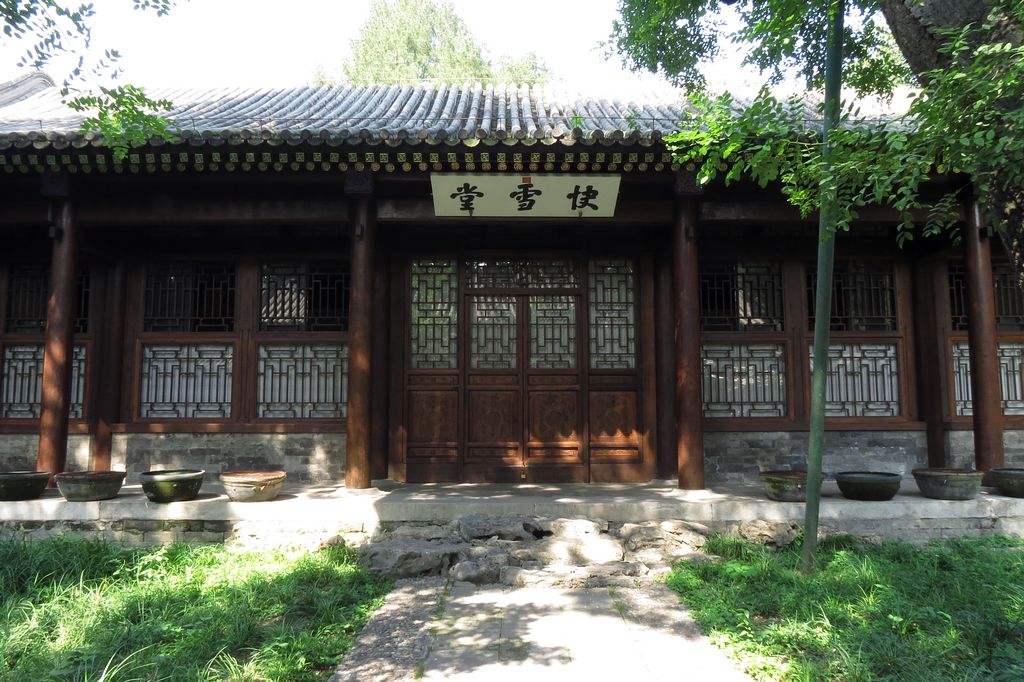
Generally, a stone lion in front of a gate faces outwards, so it seems strange that the two stone lions in front of the Temple of Eternal Peace face inwards. As a story goes, at first the two stone lions guarded the Temple of Eternal Peace with their faces outward. One day, they were sitting there, as usual, and heard some words from a worshiper that many fairies were present at a banquet in the Land of Extreme Happiness. The two stone lions felt excited and longed to see the fun, so they decided to go there at night.
They secretly left the Temple and ran to the Land of Extreme Happiness. After taking a turn around the White Dagoba Hill, they didn’t find the Land yet. Where is it? Suddenly, they heard a strain of splendid music coming from the opposite shore, a building over there being in a blaze of light. “That building must be where the Land of Extreme Happiness is located”, the two lions said to themselves.
They, however, didn’t know how to get across the lake. The two lions had to sit by the lake and enjoyed the marvelous music from the fairyland. A rooster crowed loudly when they were enchanted by the music. The sun was rising. The two stone lions came to reason and ran back to the Temple in a hurry. When they just arrived there, the day dawned. They uttered a sigh of relief, only to find their faces inward. But they couldn't move anymore.
To visit the whole Park (about four hours):
Round City→Jade Islet→Yilan Hall→the northern shore of the Park→Five Dragon Pavilion→Land of Extreme Happiness→Chanfu Temple→Kuaixue Hall→Nine Dragon Wall→Great Western Heaven→Studio of Calmness→Zhishan Bridge→Exit from the East Gate
To visit the Round City and Jade Islet (about two hours):
Round City→South Gate of the Park→Bridge of Eternal Peace→Temple of Eternal Peace→White Dagoba→Stele of the Jade Islet in Spring Shade→Long Corridor→Yilan Hall→Daoning Study→Yuegu Tower→Exit from the South Gate after returning to the Bridge of Eternal Peace
(http://www.beihaipark.com.cn/)
North Gate: Take bus 13, 42, 107, 111, 118, 612, and 701 and get off at Beihai Beimen Station.
East Gate: Take bus 5 and get off at Xibanqiao Station.
South Gate or Southwest Gate: Take bus 5, 101, 103, 109, 124, 128, or Shuttle 1 and 2 and get off at Beihai Station.
By Subway
Take Metro Line 6 and get off at Beihaibei Station and exit B.
Chinese: 请带我去北海公园。English: Please take me to Beihai Park.
Chinese: 请带我去北海公园的东门。English: Please take me to the East Gate of Beihai Park.
Chinese: 请带我去北海公园的南门。English: Please take me to the South Gate of Beihai Park.
If you go to Beihai Park from the center of Beijing (Grand Hyatt Beijing), it takes about 15 minutes (about 15 yuan).
If you go to Beihai Park from Beijing Capital International Airport, it takes about 50 minutes (about 90 yuan).
If you go to Beihai Park from Beijing Daxing International Airport, it takes about 60 minutes (about 170 yuan).
If you go to Beihai Park from Beijing West Railway Station, it takes about 25 minutes (about 30 yuan).
If you go to Beihai Park from Beijing South Railway Station, it takes about 27 minutes (about 30 yuan).
